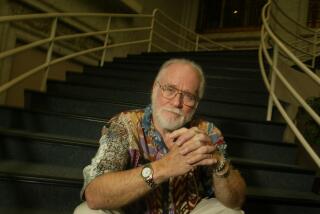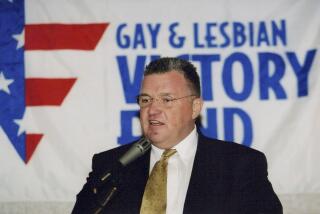Op-Ed: Billy Graham: Made in L.A.
Los Angeles saved Billy Graham.
The famed evangelist died at his home in North Carolina on Wednesday morning at the age of 99. In his career spanning nearly 70 years, he spoke to more than 215 million people in 185 countries and territories around the world, according to the Billy Graham Evangelistic Assn., converting millions of them to evangelical Christianity.
But when he came to Los Angeles in September 1949, it was hard to imagine he would ever have such influence. Only 30 years old, the handsome Southern Baptist preacher raised on a dairy farm in North Carolina was already thinking about leaving the ministry after a series of disappointing revivals in other cities.
Contemplating retirement from the mission he had just begun, Graham hid away for a period of prayer and reflection in the San Bernardino Mountains. (Graham would use Southern California as a place for spiritual retreat throughout his life.) When he descended some time later, he had recommitted to his ministry. He was also met by a group of Los Angeles businessmen who were ready to sponsor his next crusade in their city.
Graham got to work. His team erected an enormous tent stretched across a parking lot at the corner of Washington Boulevard and Hill Street. Dubbed the Canvas Cathedral, the tent would host more than 350,000 Californians who crammed nightly into the tight rows of folding chairs to hear the energetic preacher’s fiery message.
In a number of ways, Los Angeles provided the perfect setting for Graham’s message. Its image as the hedonistic playground of Hollywood’s elite offered an easy target for Graham’s moral warnings. “If Sodom and Gomorrah could not get away with sin,” Graham thundered, “neither can Los Angeles!”
But it was also a city of conservative Christians: Los Angeles was home to thousands of relocated Baptist and fundamentalist Midwesterners who had fled the Dust Bowl. In the autumn of 1949, they filled Graham’s tent each night.
Two months in Los Angeles changed everything, both for Billy Graham and the world he made.
Although the preacher originally planned the Los Angeles Crusade to last only three weeks, he extended his engagement an additional five weeks to accommodate demand. Three thousand of those in attendance were “born again,” including a bevy of movie stars and Louis Zamperini, the Olympic track star who had survived his torturous imprisonment in a Japanese war camp during World War II, but was struggling with alcohol and depression. “Billy Graham helped save me,” Zamperini would later recall.
Graham’s career also received new life. The city’s press reported constantly on the events inside the Canvas Cathedral, puzzled by the throngs who gathered nightly to hear him. The news spread quickly. When William Randolph Hearst learned of the many celebrities, including Roy Rogers and Dale Evans, who were answering Graham’s altar call, he sent a two-word telegram to the editor of every newspaper he owned. “Puff Graham,” the note read. Graham’s face was soon plastered on front pages across the country.
As Graham preached his last sermon in Los Angeles that autumn, he seemed to sense how profoundly the city had transformed his ministry and altered his destiny. “The revival that started here won’t end with the folding of this tent,” he said. “This is not it yet, but it will come.”
He entered Los Angeles a virtual unknown, and he left it almost a household name. His team quickly dispatched the canvas tent for packed stadiums in major cities around the world.
Perhaps out of a sense of indebtedness to the city or a worry that its residents particularly needed to hear the gospel — or both — Graham returned six more times to Los Angeles over his career, speaking to more than 2.5 million people in total. (He also led numerous other revivals across Southern California through the years). Graham’s 1963 crusade at the Los Angeles Memorial Coliseum set attendance records. On the last afternoon of the three-week revival, 134,254 people crowded in to hear Graham’s sermon, the largest crowd ever assembled at that venue.
Some of Hollywood’s biggest names were constant figures at Graham’s Los Angeles revivals, just as they had been a feature at the first crusade in 1949. But for all his fame, Graham’s message remained the same: Individuals need to repent of their sins and accept God’s free gift of eternal life through Christ’s sacrifice on the cross.
Graham acknowledged how vital Los Angeles had been to his trajectory. In his autobiography, “Just as I Am,” he titled his chapter on the 1949 Los Angeles crusade “Watershed.” Two months in Los Angeles changed everything, both for him and the world he made.
Neil J. Young is author of “We Gather Together: The Religious Right and the Problem of Interfaith Politics.” He co-hosts the history podcast Past Present.
Follow the Opinion section on Twitter @latimesopinion or Facebook.
More to Read
A cure for the common opinion
Get thought-provoking perspectives with our weekly newsletter.
You may occasionally receive promotional content from the Los Angeles Times.






